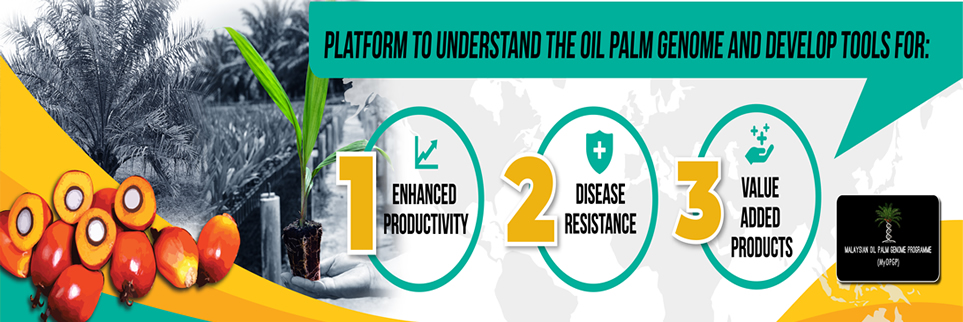


The goal of the Malaysian Palm Oil Board (MPOB) Oil Palm Genome Programme (MPOB_OPGP) is to produce a draft sequence of the oil palm genome. The sequence will provide a deeper understanding of the genome architecture and become a resource for biomarker discovery and development of diagnostic tools. The programme was first initiated in 2004 to selectively sequence the hypomethylated regions of the genome, and was subsequently expanded to the whole genome, facilitated by advancements in sequencing technologies and bioinformatics.

The 2013 genome assemblies for Elaeis guineensis and Elaeis oleifera were built using Roche 454 and Illumina sequencing technologies, providing valuable insights into key agronomic traits like fruit color and shell thickness. In 2024, independent and significantly improved assemblies were produced using PacBio long reads, Dovetail HiRise with Chicago and HiC proximity ligation sequencing, and optical mapping. The sequences were organized into pseudochromosomes through a genetic map-guided approach, resulting in more accurate and contiguous assemblies that enhance our understanding of the oil palm genome. The transcriptome and epigenome of oil palm were also deciphered.
MPOB_OPGP data has facilitated the development of important genomic platforms, such as single nucleotide polymorphism (SNP), oligo and methylation arrays. These platforms are being leveraged on to improve efficiency of oil palm breeding and tissue culture.
The objectives of the programme are: |
|
| 1 | To obtain a gold standard reference of the oil palm (E. guineensis and E. oleifera) genome |
| 2 | To identify markers and genes/promoters of interest associated with important agronomic traits |
| 3 | To use the genome information to develop disease resistant palms with enhanced productivity |
| 4 | To develop value-added products |